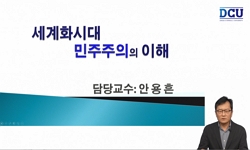This paper aims at identifying Relations and Types of Civil Society Movement(NGO) and Party. Political Opportunity Structure(POS) that is used as the framework for this paper are composed of two elements. One is official political institution, especia...
http://chineseinput.net/에서 pinyin(병음)방식으로 중국어를 변환할 수 있습니다.
변환된 중국어를 복사하여 사용하시면 됩니다.
- 中文 을 입력하시려면 zhongwen을 입력하시고 space를누르시면됩니다.
- 北京 을 입력하시려면 beijing을 입력하시고 space를 누르시면 됩니다.

시민사회운동과 정당의 관계 및 유형에 관한 연구 = The Research on Relations and Types of Civil Society Movement(NGO) and Party
한글로보기https://www.riss.kr/link?id=A103974876
-
저자
정상호 (서원대학교)
- 발행기관
- 학술지명
- 권호사항
-
발행연도
2007
-
작성언어
-
-
주제어
Political Opportunity Structure ; NGO ; party ; electoral system ; political coalition ; 정치적 기회구조 ; 시민사회운동 ; 정당 ; 선거제도 ; 정치동맹정 상 호한양대학교
-
등재정보
KCI등재
-
자료형태
학술저널
- 발행기관 URL
-
수록면
161-184(24쪽)
-
KCI 피인용횟수
17
- DOI식별코드
- 제공처
- 소장기관
-
0
상세조회 -
0
다운로드
부가정보
다국어 초록 (Multilingual Abstract)
This paper aims at identifying Relations and Types of Civil Society Movement(NGO) and Party.
Political Opportunity Structure(POS) that is used as the framework for this paper are composed of two
elements. One is official political institution, especially electoral system which directly influenced on
the relation of NGO and Party. The other is the availability of political coalition that is index of cleavage or ally of elites. The combination of this two variables produce four types. The first model is independent party model, Which is typical of green parties of Europe. The PR System and alliance with new left party formed this model. The second model is policy alliance model of America. Simple majority vote and the Coalition of established party induced this type. The third model is alternative
movement-party model of Eastern Europe. The Civic groups of Eastern Europe are forced to take
government due to the newly introduced PR system and the collapse of communist party. The last model is apolitical model of Korea. The absence of political ally and first past the post give rise to this model.
국문 초록 (Abstract)
시민사회운동과 정당의 관계를 분석한 본 연구에서 정치적 기회구조는 두 가지 요소로 구성된다. 하나는 공식적 정치제도, 특히 운동과 정당의 관계에 직접적 영향을 미치는 선거제도이고, ...
시민사회운동과 정당의 관계를 분석한 본 연구에서 정치적 기회구조는 두 가지 요소로 구성된다. 하나는 공식적 정치제도, 특히 운동과 정당의 관계에 직접적 영향을 미치는 선거제도이고, 다른 하나는 정치동맹의 이용가능성이다. 이러한 선거제도와 정치동맹의 결합이 만들어 낸 정치적 기회구조의 개방성 정도에 따라 운동-정당의 관계를 네 가지 모델로 분류하였다. 첫째는 서유럽 녹색당으로 상징되는 독자적 정당화 모델이다. 비례대표제라는 선거제도와 유럽의회라는 독특한 정치제도는 녹색당의 정치적 실험을 안정적으로 정착시켜왔다. 아울러, 신좌파 정당과의 협력과 연대는 녹색당이 대표하였던 신사회운동의 이슈와 가치를 중요한 정치 의제이자 선거 이슈로 보편화시켰다. 둘째는 미국의 로비와 정치활동위원회(PAC)로 상징되는 정책협력 모델이다. 양당제와 다수제라는 완고한 선거제도는 독자적 정당화를 가로막은 제도적 장벽으로 작용하였다. 대신, 운동이 선택한 전략은 우호적 정당과의 정책 협력을 발전시키는 것이었다. 셋째는 동유럽에서 일반화된 대안적 정당-정부 모델이다. 새롭게 도입된 비례대표제의 도입은 운동의 정당으로의 변화를 촉진하였고, 공산당의 붕괴와 분열이 가져온 정치사회의 공백은 운동으로 하여금 대안 정부를 자임하게 만들었다. 끝으로, 선거제도의 장벽과 정치동맹의 부재 속에서 안정적 관계의 구축보다는 간헐적 정치 도전과 개인적 정치 충원이 이루어지고 있는 한국의 비정치 모델이 있다. 정치적 중립성을 고수해야 한다는 현재의 지배적 담론은 시민운동의 정치적 진출의 성패를 결정한 독립 변수가 아니라 정치적 기회구조의 폐쇄성이 가져온 종속변수라 할 수 있다.
참고문헌 (Reference)
1 김영래, "한국과 캐나다의 시민사회단체의 정치참여 비교 연구" 제3섹터연구소 3 (3): 111-141, 2005
2 박재묵, "한국 시민운동의 정치세력화 방향: 환경운동연합과 대전지역 시민운동단체의 지방선거 참여사례를 중심으로" 서울대학교 출판부 2001
3 이재명, "정당과 시민단체" 한국비교공법학회 5 (5): 73-100, 2004
4 홍일표, "전략적 용량의 한계에 도달한 한국시민운동의 정치적 중립: 중립성의 도그마에 대하여" 참여사회연구소 (3) : 2003
5 오재일, "일본의 혁신자치체에 관한 고찰" 33 (33): 1999
6 김옥구, "일본의 혁신자치체 탄생과 그 정책" 3 : 1996
7 서두원, "신사회운동의 제도화와 민주주의의 발전" 서울대학교 출판부 2001
8 권태환, "신사회운동과 정치: 정치세력화의 요인과 쟁점" 서울대학교 출판부 2001
9 정대화, "시민운동의 관점에서 본 진보정당-민주노동당과 시민운동의 관계를 중심으로" 비판사회학회 (64) : 41-64, 2004
10 고상두, "시민운동에서 정당으로의 이행: 구동독 반체제 그룹의 한계" 29 : 1998a
1 김영래, "한국과 캐나다의 시민사회단체의 정치참여 비교 연구" 제3섹터연구소 3 (3): 111-141, 2005
2 박재묵, "한국 시민운동의 정치세력화 방향: 환경운동연합과 대전지역 시민운동단체의 지방선거 참여사례를 중심으로" 서울대학교 출판부 2001
3 이재명, "정당과 시민단체" 한국비교공법학회 5 (5): 73-100, 2004
4 홍일표, "전략적 용량의 한계에 도달한 한국시민운동의 정치적 중립: 중립성의 도그마에 대하여" 참여사회연구소 (3) : 2003
5 오재일, "일본의 혁신자치체에 관한 고찰" 33 (33): 1999
6 김옥구, "일본의 혁신자치체 탄생과 그 정책" 3 : 1996
7 서두원, "신사회운동의 제도화와 민주주의의 발전" 서울대학교 출판부 2001
8 권태환, "신사회운동과 정치: 정치세력화의 요인과 쟁점" 서울대학교 출판부 2001
9 정대화, "시민운동의 관점에서 본 진보정당-민주노동당과 시민운동의 관계를 중심으로" 비판사회학회 (64) : 41-64, 2004
10 고상두, "시민운동에서 정당으로의 이행: 구동독 반체제 그룹의 한계" 29 : 1998a
11 김영래, "시민단체의 정치참여 발전 방향" 2000
12 오현철, "시민단체의 선거참여 활동을 제약하는 요인 분석: '담론적 기회구조'를 중심으로" 한국정치학회 38 (38): 105-123, 2004
13 이희수, "세계화시대에 노동운동의 관점에서 바라본 시민운동의 대중성" 민주화운동기념사업회 2004
14 아렌드 레이파아트서주실 역, "선거제도와 정당제: 27개 민주주의 국가를 대상으로(1945-1990)" 삼지원 1997
15 김재한 편, "서구 정당체제의 재정렬" 1994
16 최장집, "민주화 이후의 민주주의" 후마니타스 2002
17 장훈, "민주주의의 위기와 정당, 시민운동: 영국의 경험" 한국정치학회 2000
18 이시재, "동아시아의 변동과 신사회운동의 정치세력화" 서울대학교 출판부 2001
19 고상두, "동국 민주화 과정에서 시민사회의 역할에 대한 비판적 고찰" 13 (13): 1998b
20 Burnstein, Paul, "The Success of Political Movement: A Bargaining Perspective" University of MinnesotaPress 1995
21 Gamson, "The Strategy of Social Protest" Wadsworth Publishing Company 1990
22 Jenkins, J. Craig, "The Politics of Social Protest" University of MinnesotaPress 1995
23 Kriesi, Hanspeter, "The Political opportunity Structure of New Social Movements: Its Impact onTheir Mobilization" The Politics of Social Protest,University of Minnesota Press. 1995
24 "The New Role of Non-Governmental Organizations in Central and EasternEurope after the Collapse of Communist Regime" Auflage. 1995
25 Koopmans, "The Dynamics of Protest Waves 1965 to 1989" 1993
26 Fower, Alan, "Strengthening Civil Society in Transition Economy-From Concepts to Strategy" INTRAC 1996
27 Dalton, J. Russel, "Strategies of Partisan Influence: West European Environmental Groups" University ofMinnesota Press 1995
28 Misztal, Bronislaw, "Starting from Scratch Is Not Always the Same: ThePolitics of Protest and the post-communist Transitions in Poland and Hungary" The Politics of Social Protest, University of Minnesota Press 1995
29 Hanagen, Michael, "Social Movements: incorporation, Disengagement, and Opportunities" Rowman &Littlefield Publishers 1998
30 Claus, "Reflection on the Institutional Self-Transformation of Movement Politics New Social andPolitical Movements in Western Democracies" Oxford University Press 1990
31 Kriesi, Hanspeter, "New SocialMovements in Western Europe" University of Minnesota Press 1995
32 Herbert, "New Social Movements and the Decline of Party Organization" 1990
33 정상호, "NGO를 넘어서: 이익정치의 이론화와 민주화를 위한 탐색" 한울 2006
34 Illner, Michal, "Local Democratization in Czech Republic After 1989" M.E. Sharpe 1998
35 Norris, Pippa, "Legislative Recruitment" LeDuc. Comparing Democracies 1996
36 Goldstone, Jack A, "Introduction: Bridging Institutionalized and Noninstitutionalized Politics" Cambridge University Press 2003
37 Rychard, Andrzej, "Institutions and Actors in New Democracy" Power in Movement, Cambridge University Press 1998
38 Dryzek, John S, "Green States and Social Movements: Environmentalism in the United States,United Kingdom, Germany, and Norway" Oxford University 2003
39 Bomberg, Elizabeth, "Green Parties and Politics in the European Union, Routledge" 1998
40 Gamson, William, "Framing Political Opportunity" New York:Cambridge University 1996
41 McAdam, Doug, "Conceptual origins, current problems, future directions" New York: Cambridge University Press 1996
42 McAdam, "Comparative Perspective on Social Movements Comparative Perspectives on SocialMovements" Cambridge University Press
43 Dalton, "Citizen Politics in Western Democracies" Chatham HousePublishers 1988
44 Baumgartner, Frank R, "Basic Interest" Princeton University Press 1998
45 Miszlivetz, Ferencand, "An Emerging Paradox: Civil Society from Above" M.E. Sharpe 1998
46 Meyer, David, "A Movement Society: Contentious Politics for a NewCentury" Lanham, Rowman & LittleField 1998
동일학술지(권/호) 다른 논문
-
푸틴 집권 2기 러시아 정당체계의 성격- 패권정당모델 적용 가능성의 검토
- 한국정치학회
- 유진숙
- 2007
- KCI등재
-
- 한국정치학회
- 김종표
- 2007
- KCI등재
-
근대정치이념의 미국적 적용: 건국 초기 문헌을 통해 본 미국의 전통보수주의
- 한국정치학회
- 신유섭
- 2007
- KCI등재
-
- 한국정치학회
- 홍태영
- 2007
- KCI등재
분석정보
인용정보 인용지수 설명보기
학술지 이력
| 연월일 | 이력구분 | 이력상세 | 등재구분 |
|---|---|---|---|
| 2020 | 평가예정 | 계속평가 신청대상 (등재유지) | |
| 2015-01-01 | 평가 | 우수등재학술지 선정 (계속평가) | |
| 2011-01-01 | 평가 | 등재학술지 유지 (등재유지) |  |
| 2009-01-01 | 평가 | 등재학술지 유지 (등재유지) |  |
| 2007-01-01 | 평가 | 등재학술지 유지 (등재유지) |  |
| 2005-01-01 | 평가 | 등재학술지 유지 (등재유지) |  |
| 2002-01-01 | 평가 | 등재학술지 선정 (등재후보2차) |  |
| 1999-07-01 | 평가 | 등재후보학술지 선정 (신규평가) |  |
학술지 인용정보
| 기준연도 | WOS-KCI 통합IF(2년) | KCIF(2년) | KCIF(3년) |
|---|---|---|---|
| 2016 | 0.98 | 0.98 | 1.06 |
| KCIF(4년) | KCIF(5년) | 중심성지수(3년) | 즉시성지수 |
| 1.08 | 1.03 | 1.653 | 0.27 |




 KCI
KCI







